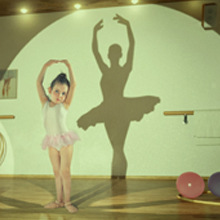
Si tienes hijos, te gusta la fotografía y dominas las herramientas digitales como el Photoshop, seguro lograrás historias originales, cómicas, con momentos fantásticos e inolvidables.
Esto ha alcanzado John Wilhelm un director de tecnologías de la información de una universidad suiza, y que él mismo se define como photoholic, algo así como fotoadicto, que con su trabajo de manipulación digital logra involucrar a sus cuatro hijos y convertirlos en personajes increíbles de cuentos de hadas, que aparecen en fotos creativas, por su carácter mágico, divertido y humorístico.
El ver sus fotos nos impresiona y nos hace pensar en las horas de trabajo que han llevado su realización, una vez captadas, gracias a sus conocimientos de programas de edición de imágenes y de modelado en 3D, que les permiten lograr el resultado artístico deseado.
Para fotografiar niños es necesaria mucha paciencia, ya que es difícil que se mantengan tranquilos y centrados, pero John lo logra con la ayuda de su esposa, quien también aporta ideas y conceptos para nuevas historias.
John Wilhelm ha declarado cómo de forma autodidacta y por su amor a la fotografía, que había heredado de su padre, fue perfeccionando sus habilidades: “Todo empezó hace aproximadamente 9 años. Tuve una especie de crisis creativa. En ese entonces estaba haciendo “solo” fotografía estándar. No experimentaba con Photoshop. También era muy apasionado, pero siempre me preguntaba para qué sirven todas esas imágenes. Todo lo que fotografié lo habían hecho miles de millones de veces otros fotógrafos antes”.
“Durante esta fase, -añade- me topé con las imágenes del artista de Photoshop alemán Uli Staiger. Supe de inmediato que eso era lo que iba a aprender... y le dije a mi esposa que algún día me convertiría en uno de los mejores Photoshoppers del mundo. No siento que haya alcanzado ese objetivo todavía (ni siquiera cerca), pero estoy muy contento con lo lejos que he llegado a lo largo de los años”.
“Me fue muy útil aprender de tutoriales en Internet, en páginas como Phlearn, LinkedIn Learning, y YouTube. Comencé con tutoriales de alemán de Calvin Hollywood y Uli Staiger. Y el consejo más importante que le puedo dar a los que aman este arte es que necesitan muchas horas para obtener resultados realmente decentes” -enfatiza.
Sin lugar a dudas que la manipulación digital y el collage que ofrece el suizo John Wilhelm, es un ejemplo más de la importancia del humor y la imaginación en el arte.

© John Wilhem.

© John Wilhem.
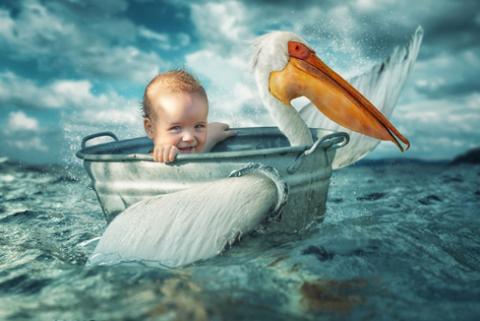
© John Wilhem.
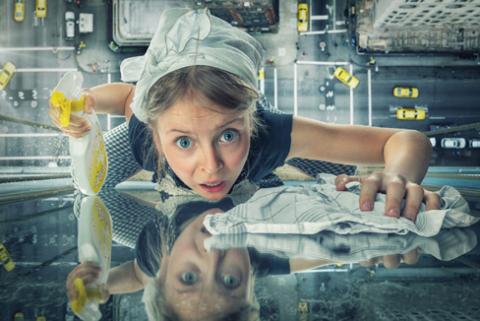
© John Wilhem.
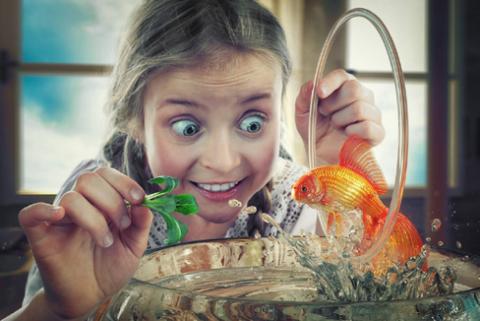
© John Wilhem.
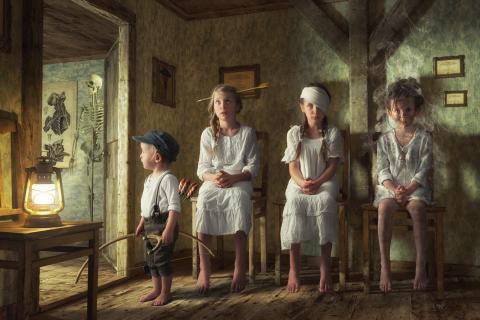
© John Wilhem.

© John Wilhem.
Visual humors | Humor in digital manipulation
By Francisco Puñal Suárez
If you have children, you like photography and you master digital tools such as Photoshop, you will surely achieve original, funny stories, with fantastic and unforgettable moments.
This has been achieved by John Wilhelm, a director of information technology at a Swiss university, and who defines himself as a photoholic, something like a photo addict, who with his digital manipulation work manages to involve his four children and turn them into incredible characters from fairy tales, which appear in creative photos, due to their magical, fun and humorous nature.
Seeing their photos impresses us and makes us think of the hours of work that they have put into their making, once captured, thanks to their knowledge of image editing programs and 3D modeling, which allow them to achieve the desired artistic result.
Photographing children requires a lot of patience, as it is difficult for them to stay calm and focused, but John manages this with the help of his wife, who also contributes ideas and concepts for new stories.
John Wilhelm has declared how self-taught and because of his love for photography, which he had inherited from his father, he honed his skills: “It all started about 9 years ago. I had a kind of creative crisis. Back then I was doing “just” standard photography. I didn't experiment with Photoshop. He was also very passionate, but I always wondered what all those images are for. Everything I photographed had been done billions of times by other photographers before.”
“During this phase, -he adds- I came across the images of the German Photoshop artist Uli Staiger. I knew right away that this was what I was going to learn... and I told my wife that one day I would become one of the best Photoshoppers in the world. I don't feel like I've reached that goal yet (not even close), but I'm very happy with how far I've come over the years.
“I found it very useful to learn from tutorials on the Internet, on sites like Phlearn, LinkedIn Learning, and YouTube. I started with German tutorials from Calvin Hollywood and Uli Staiger. And the most important piece of advice I can give to those who love this art is that it takes a lot of hours to get really decent results” -he emphasizes.
Without a doubt, the digital manipulation and collage offered by the Swiss John Wilhelm is one more example of the importance of humor and imagination in art.
